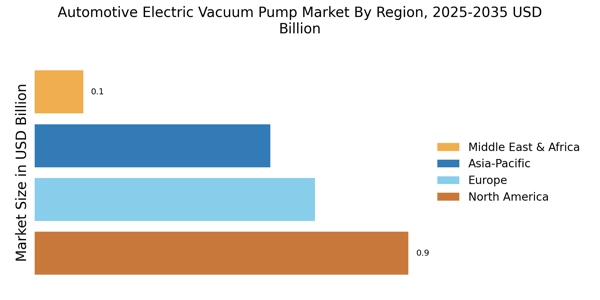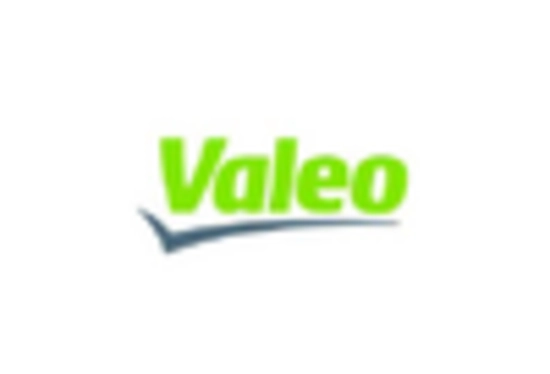Growth of Electric Vehicle Market
The Automotive Electric Vacuum Pump Market is poised for growth due to the rapid expansion of the electric vehicle (EV) market. As more consumers transition to EVs, the demand for components that support electric drivetrains increases. Electric vacuum pumps are integral to the operation of braking systems and other auxiliary functions in EVs, ensuring optimal performance. Market analysis indicates that the EV sector is projected to grow at a compound annual growth rate (CAGR) of over 20% in the coming years. This growth presents a significant opportunity for manufacturers of electric vacuum pumps, as they seek to cater to the evolving needs of the automotive industry.
Rising Demand for Fuel Efficiency
The Automotive Electric Vacuum Pump Market is experiencing a notable surge in demand driven by the increasing emphasis on fuel efficiency. As consumers become more environmentally conscious, automakers are compelled to enhance vehicle performance while minimizing fuel consumption. Electric vacuum pumps play a crucial role in optimizing engine efficiency by providing consistent vacuum pressure, which is essential for various engine functions. According to recent data, vehicles equipped with electric vacuum pumps can achieve up to 10% better fuel economy compared to traditional systems. This trend is likely to continue as regulatory standards for emissions tighten, pushing manufacturers to adopt innovative technologies that align with sustainability goals.
Consumer Preference for Advanced Features
The Automotive Electric Vacuum Pump Market is witnessing a shift in consumer preferences towards vehicles equipped with advanced features. Modern consumers are increasingly seeking vehicles that offer enhanced safety, comfort, and performance. Electric vacuum pumps are essential for the operation of advanced braking systems, such as anti-lock braking systems (ABS) and electronic stability control (ESC). These features not only improve vehicle safety but also enhance the overall driving experience. Market Research Future indicates that vehicles with advanced safety features are becoming more popular, leading to a corresponding increase in the demand for electric vacuum pumps. This trend is expected to continue as consumers prioritize technology and safety in their vehicle choices.
Regulatory Pressure for Emission Reductions
The Automotive Electric Vacuum Pump Market is also shaped by increasing regulatory pressure aimed at reducing vehicle emissions. Governments worldwide are implementing stringent regulations to combat air pollution and promote cleaner technologies. Electric vacuum pumps contribute to lower emissions by improving engine efficiency and enabling better control of exhaust systems. As a result, automakers are increasingly adopting electric vacuum pumps to comply with these regulations. Data suggests that vehicles utilizing electric vacuum pumps can reduce nitrogen oxide emissions by up to 30%. This regulatory landscape is likely to drive further adoption of electric vacuum pumps in the automotive sector.
Technological Innovations in Automotive Design
The Automotive Electric Vacuum Pump Market is significantly influenced by ongoing technological innovations in automotive design. Advances in materials and engineering techniques have led to the development of more efficient and compact electric vacuum pumps. These innovations not only enhance performance but also reduce the overall weight of vehicles, contributing to improved fuel efficiency. Furthermore, the integration of smart technologies, such as sensors and control systems, allows for better management of vacuum pressure, optimizing vehicle performance. As manufacturers continue to invest in research and development, the market for electric vacuum pumps is expected to expand, driven by the demand for high-performance automotive components.


















Leave a Comment